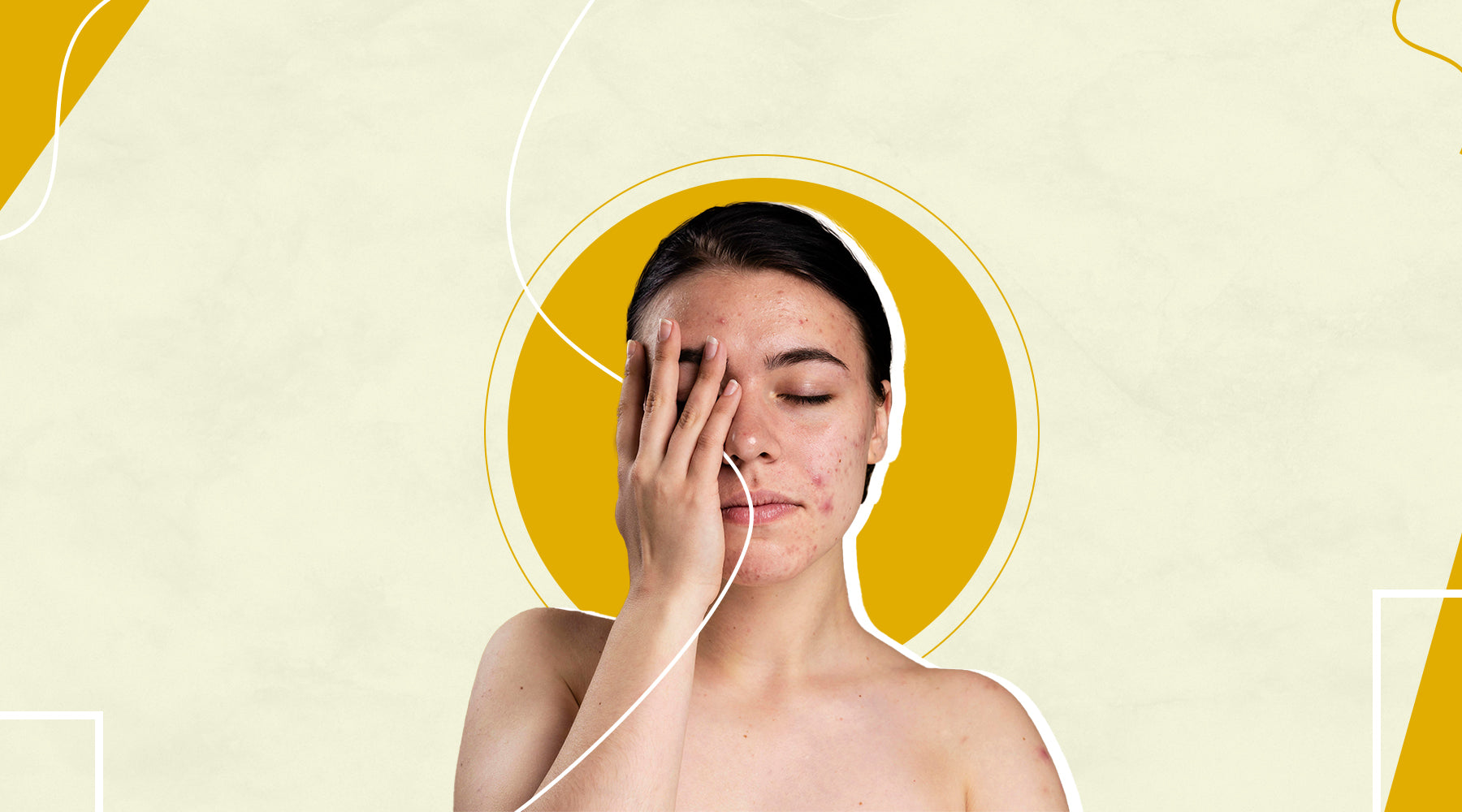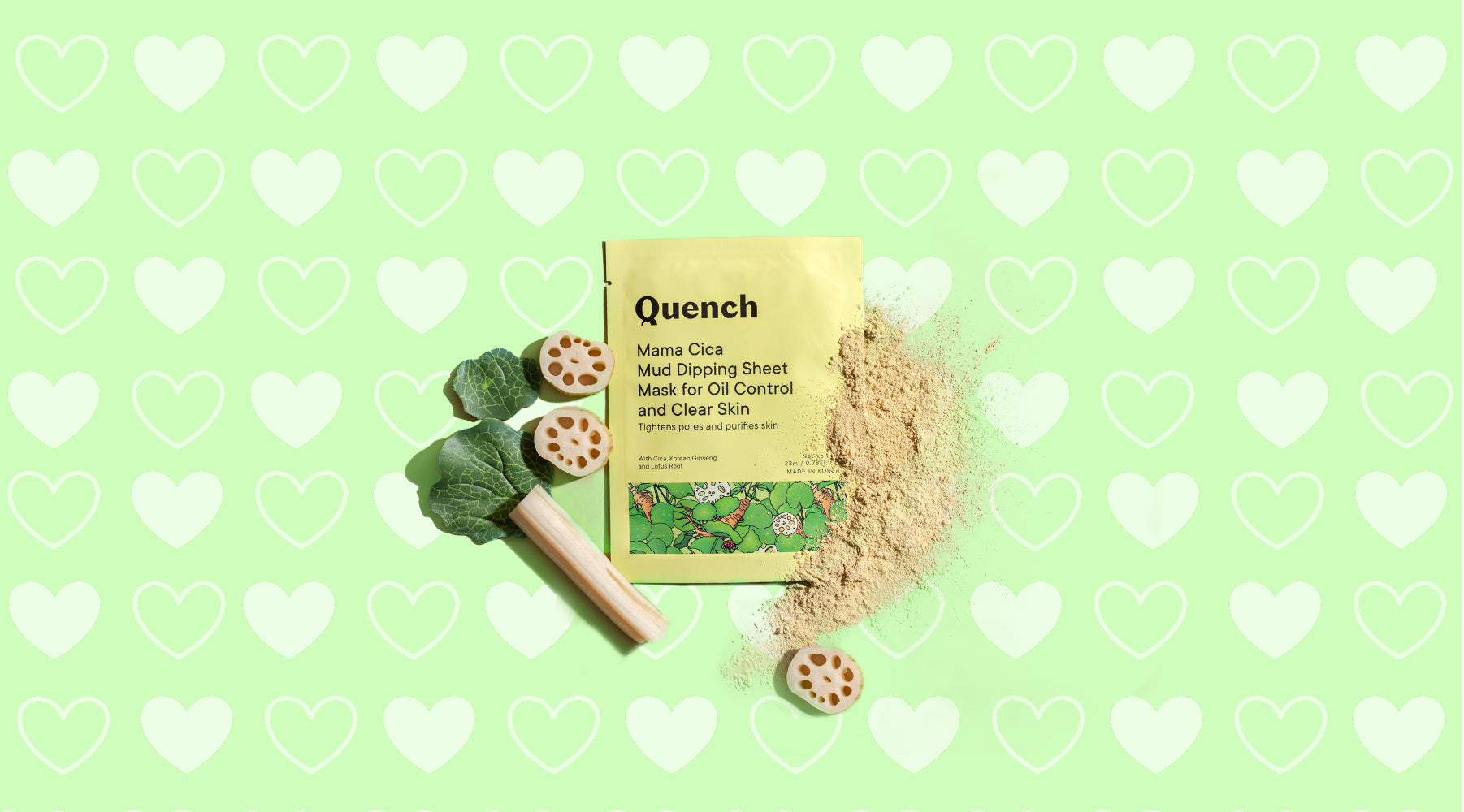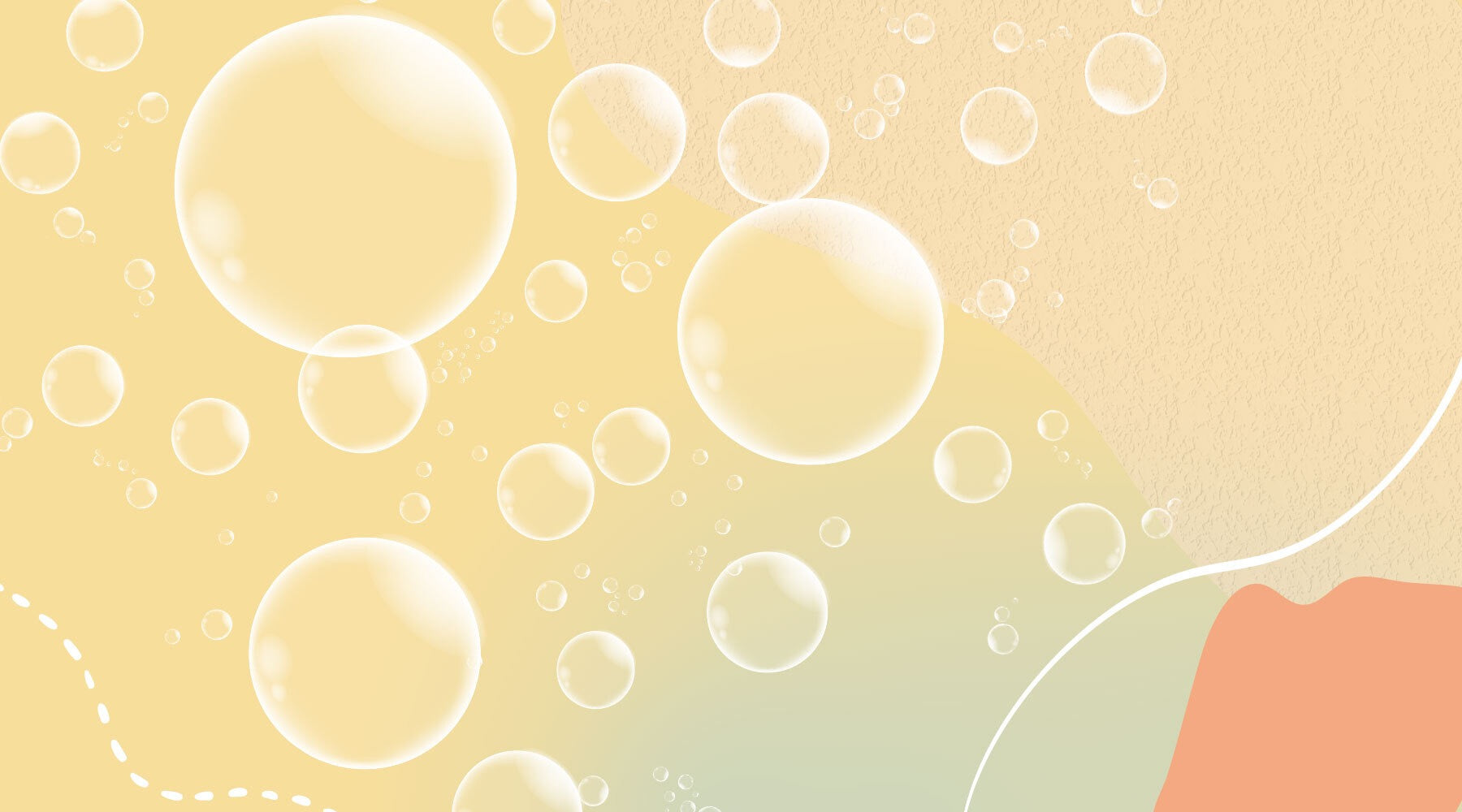
What Is Hormonal Acne And How Can You Treat It!
Whether it is a small pimple or a cheek full of small zits, we'd all agree acne is the worst thing. But when it comes to hormonal acne, a quick breakthrough of deep, super-red, painful pimples haunts our life. Unfortunately, these acne aren’t restricted just to our teens. They can show up much later in our life too. The acne flare-ups on cheeks, jawline, forehead and even between the eyebrows (practically everywhere) can be the bearer of bad news. Luckily, you have plenty of treatment options that can help quell hormonal acne.
But first, what is hormonal acne, anyway?
The term hormonal acne is exactly what it sounds like: the chain of pimples, which is tied to the fluctuation of your hormones. Be it puberty, menstruation or menopause, adult acne can present itself in your 20s, 30s, 40s and even after that. Just like your regular pimples, the stimulation of your oily glands can produce excess sebum, and a simple breakout can be the first sign of hormonal imbalance.

How is hormonal acne different from cystic acne?

Most people confuse regular acne with hormonal ones and take treatments that can escalate the situation. Hormonal acne is a type of acne that is caused due to the fluctuations of estrogen and progesterone, which are high during the menstrual cycle. What exactly does hormonal acne look like? Well, these pesky zits tend to be more cystic and inflammatory in nature. It reveals more painful red papules and pustules, especially on the lower face and can cause long term scarring. Regular pimples are more random and can pop up anywhere. Secondly, areas around the jawline are susceptible to hormonal fluctuations, and that's why they can be the first place you'd witness pimples. Coddle up in the greatness of Korean Skincare with an oil controlling sheet mask or a pimple clearing clay mask that work together to give your skin smooth and clear effect with a glass like feel.
What causes hormonal acne?
Although one of the significant factors of hormonal acne is an imbalance in hormones, there are other causes behind the formation of acne. One of the major causes is the excess sebum secretion that can lead to clog pores and send clear indications of flare-ups. Other than that, stress and lack of sleep also play a huge role in triggering your hormonal acne. During the menstrual cycle, there is a build-up of testosterone hormone that can fluctuate your hormonal balance. Pregnancy and menopause are also when your skin becomes vulnerable to acne. Polycystic ovary syndrome (PCOS) is also one of the common causes that alter your hormone levels and change the skin. Not just that, genetics also plays a significant role in determining what type of acne you are suffering from. This is why it is recommended to consult a dermatologist to figure out the cause of hormonal acne.

Read here: Some of the sneaky causes of acne and how to get rid of it!
Few steps to treat hormonal acne
1. Monitor your hormone imbalances
If you have hormonal acne, your body will indeed inhibit a solid sensitivity for estrogens, especially testosterone. So to make sure that your finicky hormones are the leading cause behind your acne, run an in-depth hormonal blood test. Test your hormones throughout the month to ensure they are stable.

2. Preventive skincare
Even when your skin is behaving well, it's essential to maintain a preventive skincare routine. From proper cleansing to powerful broad spectrum UV protection, continue with your basic skincare regime and remember less is more. Use the Mama Cica Instabright Peel Pads packed with glycolic acid, a gentle AHA that sloughs off dead skin cells, unclogs pores, lightens spots and boosts skin radiance. Indulge in a skin detox session once a week. Be it a soothing facial or diving deep into the goodness of a clay mask and give some time for your skin to heal. Indulge into creamy, luxurious Mon Cherry Brightening Pink Clay Mask deeply exfoliates, brightens and detoxes your skin, leaving you with smooth and radiant skin instantly.

Read here: The best skincare ingredients to treat acne and acne scars.
3. Make changes in your diet
TBH, food plays a massive role in determining the skin's overall health, and simple tweaks and addition can help you treat your hormonal acne. Other than avoiding food with a high glycemic index, including sugary foods that can increase the release of cortisol and other hormones, cut down your dairy. Dairy has been shown to stimulate testosterone in the body. Instead, incorporate whole grains, fermented ingredients like kombucha, kimchi and soothing teas like dandelion tea in your diet. These help in balancing the body's microbiome and reduce inflammation. Consider adding zinc supplements in your diet as they can provide natural benefits for acne.

4. Clear your pores with salicylic acid
Salicylic acid is scientifically proven to tackle inflammation and redness. It not just kills the acne-causing bacteria but also accelerates the skin cell turnover. Clean your pores with Chialeader Shine Control Gel Face Wash that'll remove dirt, grime, impurities and excess oil from your skin. The non-irritating formula powered by salicylic acid helps slough down dead skin cells, minimizes pores and combats pimples and breakouts.

Want to know more about salicylic acid? Read here
5. Manage stress and inflammation
Cortisol, the stress hormone, directly impacts your acne and causes inflammation and disrupts the functioning of other hormones. Inflammation is the central part of acne. It makes your skin look dull and tired and, on the other hand, can transform small zits into deep red cystic pimples. Women going through their monthly hormonal fluctuation tend to have periods of acute stress, which is the reason behind hormonal flare-ups. Make lifestyle adjustments, have a proper sleep and up your water intake. This will help in relieving stress and stay top of your gut health.

6. Try retinoids
Dermatologists consider topical retinoids as the first treatment step if you have mild hormonal acne. Derived from vitamin A, retinoids help clear out dead skin cells and unclog the pores. They prevent new acne from forming in the long term. But if you have sensitive skin, retinoids can sometimes be harsh to handle, possibly leading to more breakouts. Instead, opt for a natural alternative of retinol, Bakuchiol. Enriched with the goodness of avocado, pomegranate, rice water, Bakuchiol and 2% niacinamide, the Bravocado Intense Brightening Serum tackles dark spots, blemishes, and balances moisture levels.

7. Opt for natural, skin-soothing ingredients

Natural ingredients are a great alternative to treat hormonal acne. Tea tree oil is one of the best at-home treatments to reduce inflammation and redness associated with hormonal breakouts. Similarly, Apple cider vinegar has antibacterial and antifungal properties that kill acne-causing bacteria. Ingredients such as licorice and honey also work to exfoliate the grime inside the skin and relieve blemishes. Try out Mon Cherry Overnight Peeling Mask packed with vitamin C infused grapefruit and antioxidant-enriched cherry blossoms that work together to diminish dark spots, blemishes and unclogs pores, revealing clearer, smoother and fresher looking skin.

8. Consult a dermatologist in need
If you believe that your skin condition is worsening or, in general, feel like getting your acne tested, see a dermatologist. You can also try oral contraceptive pills that are FDA-approved to balance out your hormones, including those responsible for your hormonal acne. They can help in decreasing testosterone levels which can lead to fewer breakouts.

Hormonal acne can be painful and can shake up your self-esteem—but you don’t have to put up with it. Coordinate with your doctor and follow your basic skincare regime religiously.



Leave a comment
This site is protected by hCaptcha and the hCaptcha Privacy Policy and Terms of Service apply.